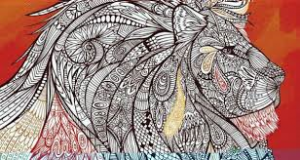 The Michael O’Mara publishing empire is housed exactly as you would expect from a company that had no idea how fast it was going to grow. Clara Nelson, the publicity director, pointed me to various staircases in a fancy, Bicester Village-style office complex in south-west London. “That’s sales and marketing … then we had to take that building over for production …” It was originally built on the publication of Diana: Her True Story. Now, the company’s success is colouring-in books: they dominate the market, with 30 titles currently in print, and the market is huge. Philippa Wingate, the editorial director, said: “You wouldn’t really associate us with royals now, although we did do Colour in Kate [the Duchess of Cambridge]. We sourced pictures of her, places she’s been, on her honeymoon. Then we did Colour in One Direction.”
The Michael O’Mara publishing empire is housed exactly as you would expect from a company that had no idea how fast it was going to grow. Clara Nelson, the publicity director, pointed me to various staircases in a fancy, Bicester Village-style office complex in south-west London. “That’s sales and marketing … then we had to take that building over for production …” It was originally built on the publication of Diana: Her True Story. Now, the company’s success is colouring-in books: they dominate the market, with 30 titles currently in print, and the market is huge. Philippa Wingate, the editorial director, said: “You wouldn’t really associate us with royals now, although we did do Colour in Kate [the Duchess of Cambridge]. We sourced pictures of her, places she’s been, on her honeymoon. Then we did Colour in One Direction.”
Five of Amazon’s top 10 last week were adult colouring-in books, as were six of Brazil’s top 10 non-fiction list. Last year in France, the combined colouring-in industry sold 3.5m books. Adrian Greenwood, the deputy managing director at Michael O’Mara, said: “In 20 years of publishing, I’ve never seen anything like it. What I love about it is that it’s such a universal phenomenon, it’s in all walks of life and in all territories.”
“Publishing is a commercial venture,” said Wingate. “But to think you’re doing something that might bring a little bit of peace and calm and joy to people’s lives …” she beams. “It’s a totally new experience.”They showed me some beautiful books: Animorphia by Kerby Rosanes looks like hyper-detailed doodling, with sort of manga influences. That’s more of a young adult colouring-in experience. There’s something for all the age groups, even children. Amid all the Scandinavian folk themes and Japanese patterns, the huge underpinning theme is anxiety: the Art Therapy Colouring book, Calming Art Therapy, Colour Therapy, Can’t Sleep Colouring, mindfulness, tranquility, stress. I met Annie Brookfield, 42, on a Facebook colouring-in group. She lives in Warrington and started colouring in when she was an agency worker. Brookfield said: “There was a lot of standby work, and I was trying to stay on the night shift rota, then you’re not having to stay up all day waiting for a phone call, then work all night. So I was staying up until two or three o’clock in the morning. On zero-hours contract work, your wage isn’t stable, it’s very tense. This was really cheap. My stress levels went down; it really is quite tranquil.” She said sometimes, when really on edge, “if I haven’t had enough work or enough the week before, or there’s a big bill coming up, my husband will actually say, just go and do some colouring, and he’ll watch the telly. We’re like toddlers who parallel play”. There is a crossover with mindfulness and also with mantras: activities in which the brain is engaged just enough to stop it whirring, but not so much that the concentration is draining.
Asma Zergui, an independent colouring book artist and obstetrician based in Algeria, said: “I’ve just finished my residency in obstetrics and gynaecology and, like all doctors, I was anxious and stressed all the time. I can tell you that the moment I started drawing and colouring, everything seemed different in my life. It definitely helped me get through a severe depression.” Lucy Fyles, 24, has a blog on which she reviews colouring-in books from a mental health perspective. She said: “I have a very active mind, made worse by anxiety. It just seems to quieten it down and slow it down. I’ll go to a colouring book, I’ll be incredibly stressed, I cannot stop the thoughts swirling around in my head. And half an hour later, I’ll notice that I’m calmer. My mind’s calmed down.” It’s not a silver bullet. Fyles continued: “As an anxious person, it sounds really ridiculous but I will sit there worrying if I’m going to mess it up. I might colour that green, but what if I get it wrong, what if it’s too green?” Even though you can do it commuting (though Brookfield says you get funny looks), Fyles says it is a great thing to do when you are housebound. She was a nursing assistant on a psychiatric ward until 15 months ago, when her anxiety disorder became too intense. “There are so many of us out there who are housebound, and people don’t know. Because we’re hidden. We’re indoors.” The hardest thing, Greenwood says, is having a genre that youare completely unable to project, in terms of numbers. Wingate said equably: “The hysteria might die down, but people who find pleasure in the process, who find it rewarding, therapeutic, will continue to do it.” I wonder if I would really think of it as a craze, however. If these huge sales figures are actually a nation vibrating with anxiety … then it’s not going anywhere.
This article appeared The Guardian, 27 June 2015.























